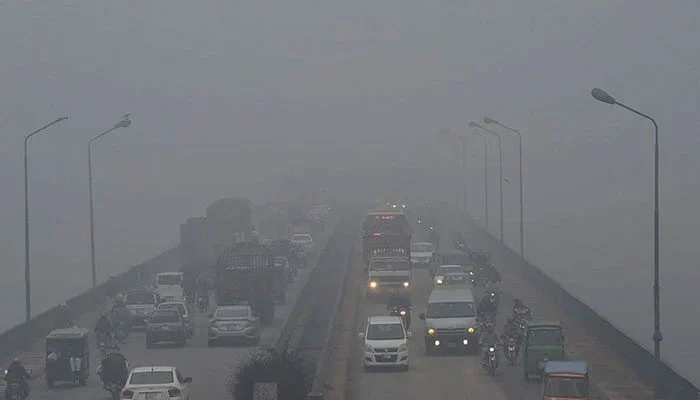KARACHI: According to the Air Quality Index (AQI), Karachi is the most polluted city in Pakistan, with Lahore coming in second.
Karachi also has the dubious distinction of ranking second from the top in the world’s most polluted cities on the air pollution measurement scale.
According to the air quality index, Karachi has 169 hazardous particulate matter.
It should be noted that AQI readings between 150 and 200 are deemed unhealthy, those between 201 and 300 are more dangerous, and those over 300 are classified as extremely dangerous.
Experts claim that the air is heavier in the winter than it is in the summer, which causes toxic particles in the atmosphere to migrate downhill and pollute the atmosphere. A layer of contaminated particles, including significant volumes of smoke and carbon, as a result, covers a metropolis.
According to specialists, the effects of the smoke released into the sky by industries, burning coal, trash, oil, or tyres start to show themselves from the beginning of winter and last through the conclusion of the season.
As a result, air quality is significantly compromised in cold weather when air pollution reaches highly harmful levels.
Although the air in Karachi may be filtered by southwest winds coming from the sea, these winds are generally halted throughout the winter, according to experts.
A healthy atmosphere in such a circumstance is subject to rainfall, which washes out all contaminated particles. They observed that winds flowing from the northeast enhance the concentration of hidden dirty particles.
Ground-level ozone, particle matter, carbon monoxide, sulphur dioxide, and nitrogen dioxide are the five pollution types used to calculate the AQI.
Pavan Manzoor is an experienced content writer , editor and social media handler along with a track record of youth-oriented activities in Pakistan and abroad. She was selected as a fully-funded delegate as a leadership fellow in Turkey. She also led a team of 5 volunteers at the week-long Young Professionals Fellowship in Maldives. She is also a member of the Youth Standing Committee on Higher Education.










